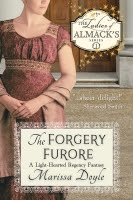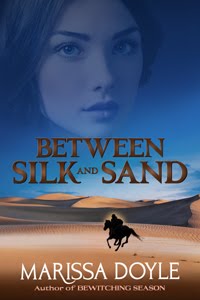 First, I have to say how incredibly excited I am to be guest blogging here at Nineteen-teen! I’ve been a clandestine reader for AGES…where was this blog when I was in high school and secretly hiding my Regency novels inside my Geography book?!
First, I have to say how incredibly excited I am to be guest blogging here at Nineteen-teen! I’ve been a clandestine reader for AGES…where was this blog when I was in high school and secretly hiding my Regency novels inside my Geography book?!As you know from my interview earlier this week, I write Regency romances, set in London and focused on British aristocracy, collectively referred to as the ton (the word came from French, literally meaning “tone” but used to describe people of fashion). Young women of the aristocracy had copious free time to do things like visit their friends, shop for dresses and ribbons, pretty themselves for the marriage mart and tool around Hyde Park.
Hyde Park is gorgeous—an enormous park in the center of London, covering more than 350 acres. I've been in love with it since a morning walk I took there at 6:30am on my first day in London a few years back. It has a fantastic history…for the Tudors fans in the crowd, Henry VIII took the space (which belonged to Westminster Abbey) in the early 1500s to use it for deer hunting. It belonged to the Crown for years, and then, finally, under Charles I, was turned into a public space. I could go on and on about its history without ever getting to the 19th century...here's a quick overview.
The King or Queen of England’s official seat is St. James Palace, but William III (who ruled with his wife Mary in the late 1600s) preferred the landscape of Kensington Palace, which at the time was far enough outside of London that it felt more rural. Because he had to travel back and forth from Kensington to St. James, he commissioned a private pathway that ran the length of Hyde Park and lit the path with 300 oil lamps, creating the first artificially lit road in England. William used the pathway all the time, and it was christened Route de Roi, which means “King’s Road” in French. Either the English couldn’t pronounce it, or they simply didn’t care that much…because that road is now called Rotten Row.
By the mid 18th century, Rotten Row was much more than a King’s private pathway. It was where everyone, EVERYONE would go to see and be seen. The road itself is a dirt pathway, so that was reserved mostly for horses and curricles or phaetons. Along the side was a length of green...and that was where ladies and gentleman of the aristocracy took their meandering (and I like to think gossipy) walks. It depends on what you read, but definitely by the mid-1800s, this was THE place to be, for both women and men, during the early afternoon--the fashionable hour. Charles James Apperley said of it:
 "On any fine afternoon in the height of the London season…he will see a thousand well appointed equipages pass before him…Everything he sees is peculiar, the silent roll and easy motion of the London-built carriage, the style of the coachmen - it is hard to determine which shine brightest, the lace on their clothes, their own round faces, or flaxen wigs - the pipe-clayed reins - pipe-clayed lest they should spoil the clean white gloves…not forgetting the spotted coach-dog, which has been washed for the occasion…such a blaze of splendor…is now to be seen nowhere but in London."
"On any fine afternoon in the height of the London season…he will see a thousand well appointed equipages pass before him…Everything he sees is peculiar, the silent roll and easy motion of the London-built carriage, the style of the coachmen - it is hard to determine which shine brightest, the lace on their clothes, their own round faces, or flaxen wigs - the pipe-clayed reins - pipe-clayed lest they should spoil the clean white gloves…not forgetting the spotted coach-dog, which has been washed for the occasion…such a blaze of splendor…is now to be seen nowhere but in London." For young women, Rotten Row was one of the places where they had a chance to show off and check out the rest of society--from women wearing the height of fashion to men in new and extravagant curricles. It was on Rotten Row that the ton got a look at those couples who were courting, the rakes who were on the lookout for wives or mistresses, the Prince Regent himself. When young ladies were on the marriage mart, a ride on Rotten Row--either on her own mount or inside his curricle with a chaperone at a discreet distance--was a broadcast to all and sundry that she might soon be off the market. Outdoor excursions gave young women a chance to spend time with the gentlemen who were courting them without risking their reputations.
Of course, the best thing about Rotten Row is that it makes for pretty neat fictional food. My favorite scene in my whole novel is one where the heroine and hero ride in his brand new curricle on Rotten Row to see and be seen. The history of Rotten Row is enough to send your imagination running away...without you!
Thanks for spending the week with us, Sarah, and best of luck with The Season! Don't forget that everyone who comments on either today's or last Tuesday's post will be entered in a drawing to win a signed copy of Sarah's book!













